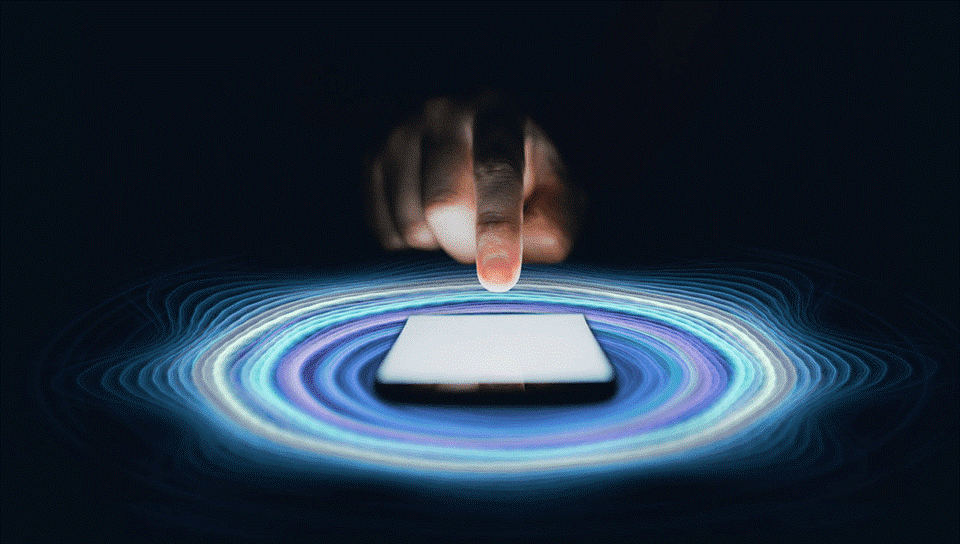
Ultra Wide Band technology provides “spatial awareness”, which is the ability of your phone to recognize its surroundings and the things in it, and basically, the user of this technology can point his phone to another phone and transfer a file or image in a way similar to NFC technology.
What is Ultra Wide Band (UWB)?
Ultra Wide Band is a short-range wireless communication protocol such as Bluetooth or Wi-Fi, and it uses radio waves, but it differs from the usual because it operates at a very high frequency.
It can be thought of as a radar that can scan an entire room continuously and focus precisely on a point – like the way a laser beam propagates – to find out its location and deliver its data.
In the early 2000s, ultrawideband technology saw limited use in military radars and covert communications and was briefly used as a form of medical imaging, such as remote cardiac monitoring systems, but its adoption was delayed until recently when commercial companies began to explore uses potential for this technique.
Currently, the primary purpose of Ultra Wideband technology is expected to be to detect the location and range of devices. Phil Solis, one of IDC’s directors of research said:
While technologies like Wi-Fi and Bluetooth have been modified to allow more accuracy in locating and connecting to other devices, Ultra Wideband is inherently more accurate, uses less power, and as production of Ultra Wideband chips increases over time, it promises lower prices.
Manufacturers have already started to adopt UWB technology in their smartphones:
An image from the Apple website showing the addition of the UWB feature in the iPhone 11 and using it to activate the Airdrop technology automatically when two iPhones are brought together
According to Solis, the world’s largest smartphone manufacturers such as Samsung, Apple and Huawei are involved in projects related to Ultra Wide Band technology, and Apple is the first to actually roll it out in the iPhone 11 series.
Samsung, along with Xiaomi, Sony, Bosch and others, is part of the FiRa (Fine Band) consortium, which is developing the Ultra Wideband ecosystem, and this ecosystem is built on top of the current IEEE 802.15.4/4x standard for wireless communications low data.
How the Ultra Wide Band technology works
Ultra Wide Band Technology Features
The technology works by sending billions of pulses over a broad spectrum frequency, then the corresponding receiver translates those pulses into data by listening to a familiar pulse sequence tuned by the transmitter. Then one pulse is sent every 2 nanoseconds, which helps the technology to achieve very high accuracy in real time.
Ultra-low energy technology; But the high bandwidth (Ultra Wide Band 500MHz) is ideal for transmitting a lot of data from a host device to other devices about 30 feet away, and unlike Wi-Fi networks, they are not good at transmitting and propagating through walls.
“Because of its high repetition rate, it represents a very large field of view,” said Jack Gold, Principal Analyst at J.Gold Associates. “So the highlight is that it supports very broad bandwidth, and it also has a lot of data processing power. So if you’re sending a 60GHz signal with a width of 500MHz, and then you multiply it into a number of channels that you can do, you’re talking in a very wide range and great ambient coverage.”
To increase the Ultra Wide Band range and reception capacity, a MIMO (Multiple Ports Outside or Indoors) system has been added, and a distributed antenna system that allows reception of short-range networks, and these antennas can be integrated into a smartphone or other devices such as a wristband or smart key.
When a smartphone with Ultra Wideband technology (such as the iPhone 11) approaches another device with the same technology, the two devices begin to determine and measure the exact distance between them. This is achieved by measuring the “Time of flight” TOF between the two devices.
Based on the IEEE 802.15.4a standard, Ultra Wideband technology can determine the relative position of peers with a line-of-sight up to 200 metres, according to the FiRa Consortium, which is currently adding a security extension — defined in IEEE 802.15.4z — to make it a “secure bandwidth technology.” precise”.
Comparison between UWB technology and other wireless networks such as Bluetooth:
Comparing UMB technology with other networks (Bluetooth, Wi-Fi and NFC), we note the superiority of the new technology in connection stability, data security and tracking accuracy.
Ultra Wide Band devices can calculate the exact location of another device that supports the same technology, such as the car keys or the TV remote control you got lost between the couch cushions. (If the lost device supports the indoor navigation service, the device that supports Ultra Wide Band technology must know its relative position and determine it with high accuracy on the map.)
UWB has an advantage over accuracy and security over Bluetooth and Wi-Fi, and according to Solis, this feature can be used for many different applications. For example, a UWB-enabled device can be used to unlock a vehicle such as a wireless key or open an entry gate to a secure area within a building. A UWB-enabled smartphone or watch can also log into a bank account via an Automated Teller Machine (ATM). That would be another security check, or your phone becomes your credit card, Solis says.